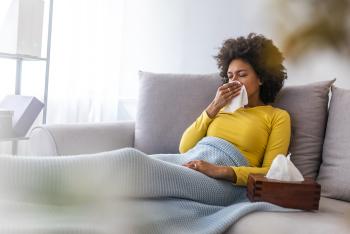Pneumonia is a lung infection that can range from mild to life-threatening. Learn the common causes...
Read More
If you are a current or previous smoker or have recently noticed new symptoms related to your breathing, your primary care physician may recommend that you have your lungs screened. Also, it is possible that you may have your lungs screened in an emergency department or urgent care setting while being examined because of breathing issues or other health concerns.

Regardless of why you get a chest X-ray or CT scan, the test might reveal something that often appears without symptoms: lung nodules, more commonly known as shadows or spots.
“Low-dose CT scans are the test of choice for lung cancer screening,” explains Inspira pulmonologist Gregory Breen, M.D. “Even though many people who get screened wind up with an abnormal finding most of these are not cancer.”
Lung nodules are often the result of residual scarring in the lungs. Scarring can come from exposure to irritants in the air, or activities such as smoking. The scarring can also be a result of health issues like pneumonia or other lung infections.
Lung nodules vary in size but are most commonly between .2 and 1.2 inches—equivalent to the size of a pen tip to a little larger than a quarter coin.
Less than 5% of nodules are found to be cancerous. Patients under the age of 40 who don’t have a history of smoking are even less likely to have a positive diagnosis. And, smaller nodules are less prone to cancer than larger ones.
Based on the characteristics of the nodule and/or any growth over time your doctor may recommend a biopsy procedure.
Biopsies are a process in which a small portion of the lung surrounding the nodule is removed for testing. There are two approaches to biopsy: taking a piece of the nodule and surrounding lung tissue or taking the full nodule and surrounding lung tissue for biopsy. This is a complex procedure, so your doctor may prefer to monitor the nodule for growth before moving forward.
Your physician may offer additional testing including genetic analysis of bronchial cells to determine your risk of lung cancer. Bronchoscopy brushing gathers bronchial cells for generic testing to help determine the risk of the nodule being cancerous. This is especially important when nodules are too small to biopsy.
Your pulmonologist may recommend surgical removal of a nodule or refer you to an oncologist or other specialist. Or, your pulmonologist may recommend the monitoring of nodules for growth over an extended period.
“Your screening schedule will depend on a few different factors,” says Dr. Breen. “The size of the nodule, as well as your family and personal medical history all play a role in a screening plan.”
If you have a lung nodule, the Inspira Lung Nodule Program ensures that you have a comprehensive plan for follow-up screenings and, if needed, treatment. Pulmonologists with the program work in communication with your primary care physician.
Make appointment with Lung Nodule Program (856) 641-8670

Pneumonia is a lung infection that can range from mild to life-threatening. Learn the common causes...
Read More
Sue and Ron Caltabiano, ages 69 and 71, were each diagnosed with chronic obstructive pulmonary...
Read More
Prostate cancer is the second most common cancer in men. While metastatic disease can feel daunting...
Read More